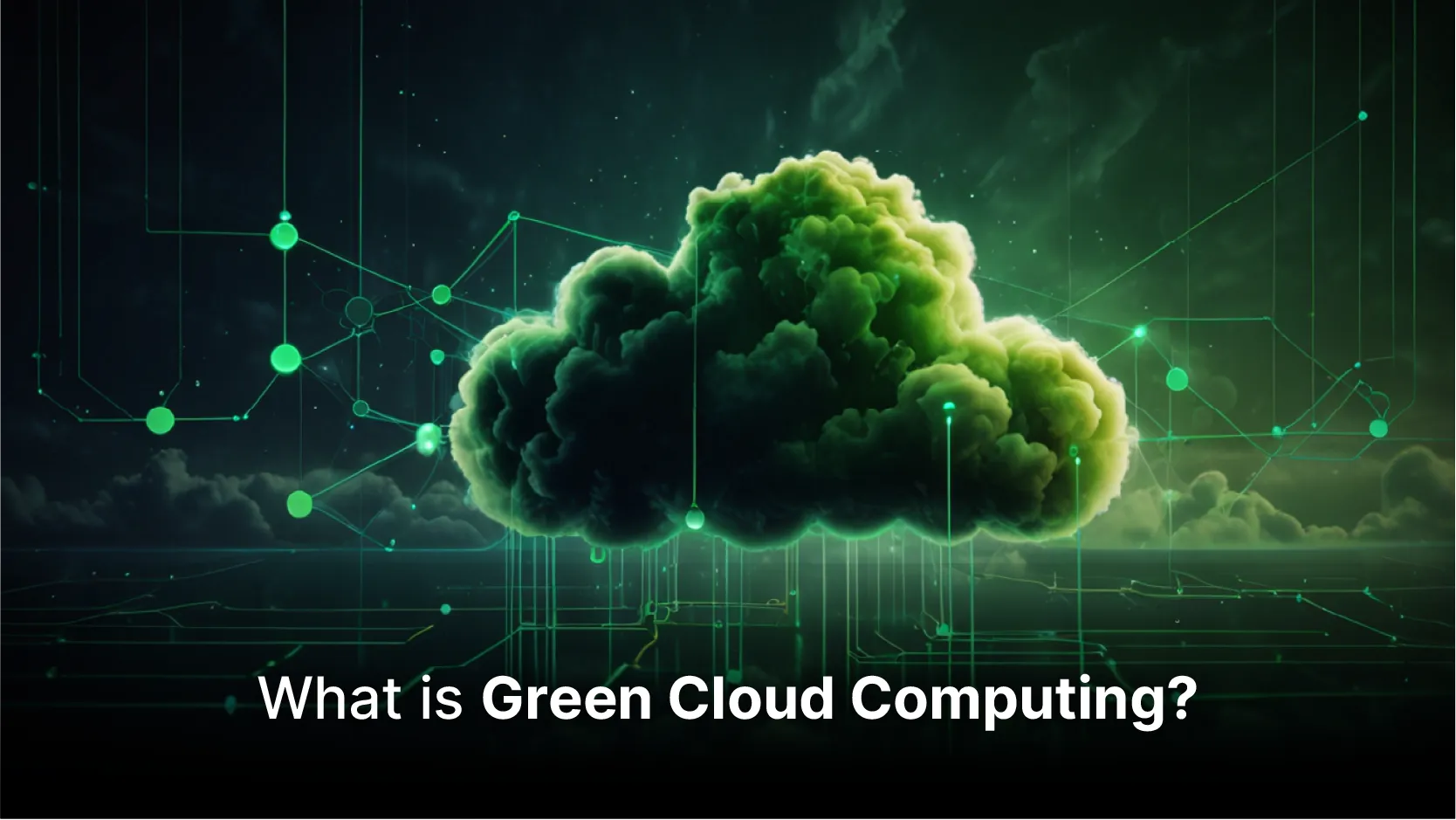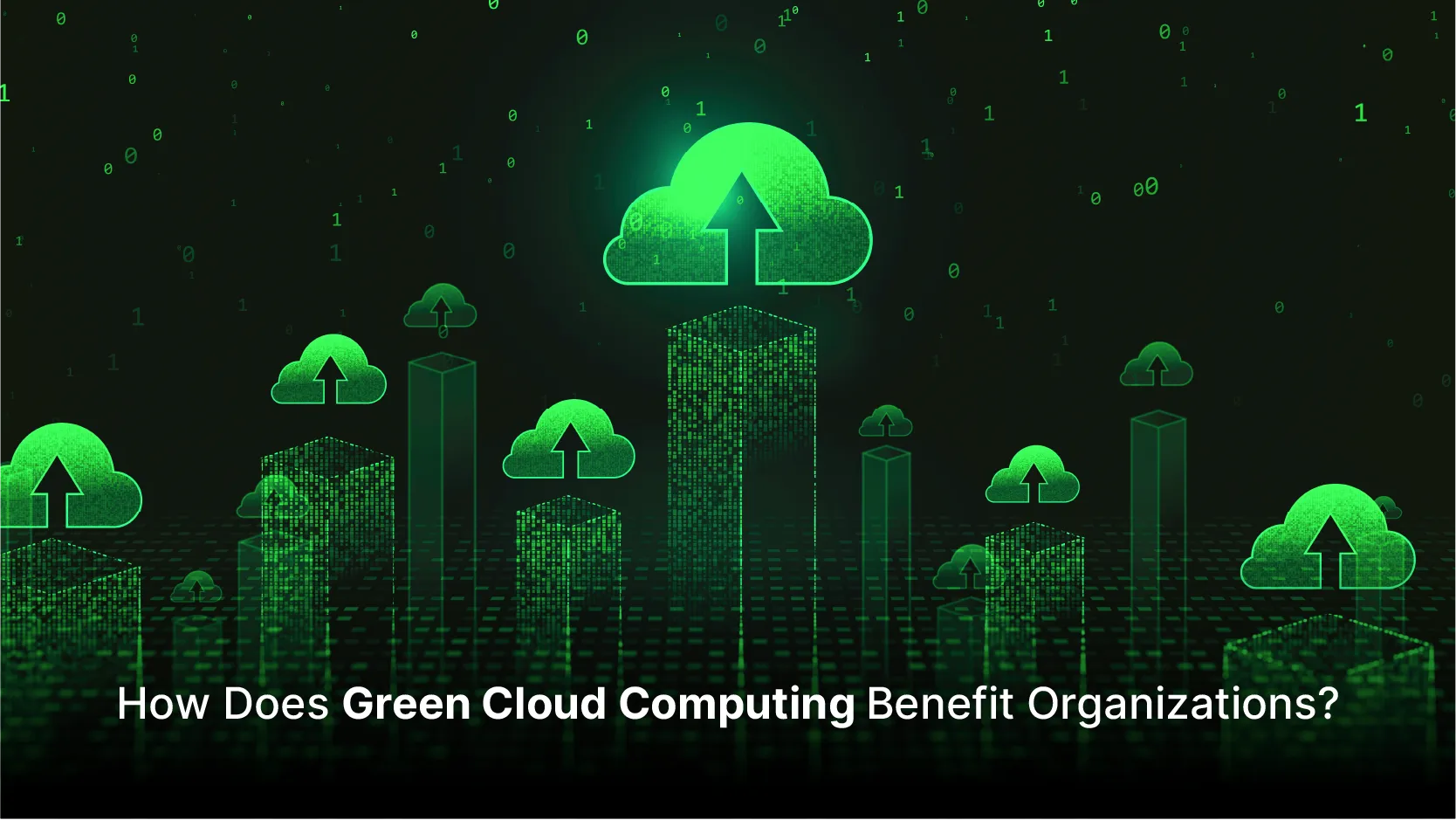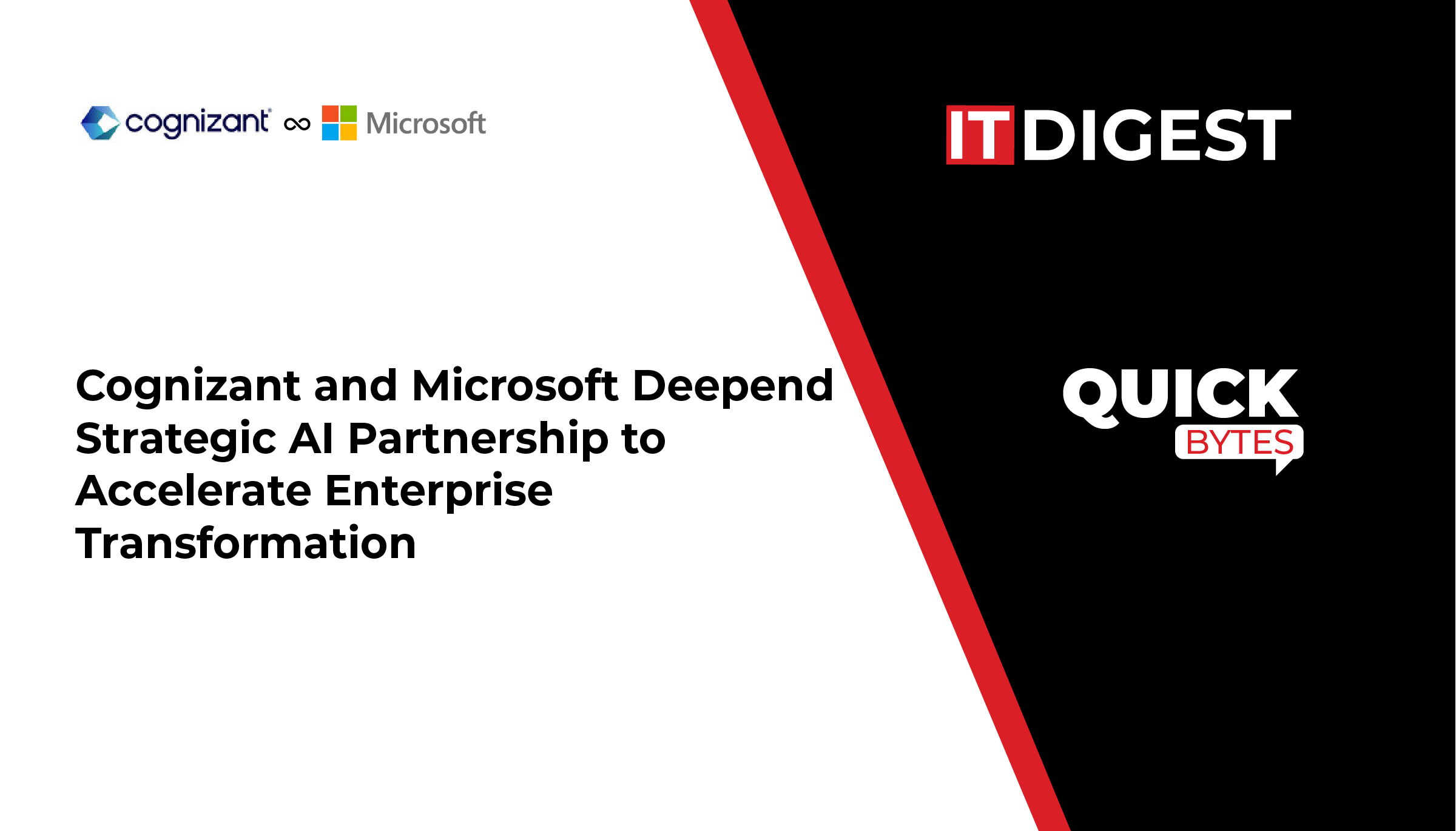Today, cloud computing has emerged as a remarkable answer to big data processing and storage problems, offering low-cost, high-speed, pay-per-use, and on-demand options. The problem, however, is the massive environmental impact.
According to Greenpeace forecasts, the technology sector could account for 20% of global electricity consumption by 2025, up from the current 7%. This increase can be linked to the growth of cloud computing. This is why green cloud computing is so important. Green computing is still in its infancy, but its goals are to develop a balanced energy economy, maximum resource utilization, low carbon emissions, longevity, and recyclable materials. Let’s find out more.
What is Green Cloud Computing?
 The term “green cloud computing” describes the application of technology, especially cloud computing, in a sustainable and ecologically beneficial way. In the IT sector, it seeks to decrease energy use, lower carbon emissions, and advance environmental sustainability.
The term “green cloud computing” describes the application of technology, especially cloud computing, in a sustainable and ecologically beneficial way. In the IT sector, it seeks to decrease energy use, lower carbon emissions, and advance environmental sustainability.
Cloud service providers now have a carbon footprint greater than all airlines put together. A single data center can use as much electricity as 50,000 houses when operating at maximum capacity. This alarming statistic shows the pressing need for alternatives.
Through the exploitation of cutting-edge technologies like artificial intelligence (AI), machine learning, and blockchain, green cloud computing helps businesses maximize resource consumption, enhance energy efficiency, and reduce their carbon footprint overall.
Also Read: Is Mobile Cloud Computing the Future of Seamless Connectivity?
How Does Green Cloud Computing Benefit Organizations?
 Energy Efficiency: By consolidating data centers and optimizing resource consumption, the cloud platform enables businesses to save energy. Data centers can lower overall energy usage by utilizing efficient cooling technologies and virtualization to increase energy efficiency. A lower carbon footprint and economic savings result from this.
Energy Efficiency: By consolidating data centers and optimizing resource consumption, the cloud platform enables businesses to save energy. Data centers can lower overall energy usage by utilizing efficient cooling technologies and virtualization to increase energy efficiency. A lower carbon footprint and economic savings result from this.- Cost Reductions: By lowering the expenses of operating and maintaining on-premises equipment, green computing benefits businesses. Businesses can avoid having to buy and maintain their own servers and cooling equipment by utilizing cloud services. This can lead to significant savings in energy, hardware, and maintenance costs.
- Scalability and Flexibility: Cloud computing gives businesses the flexibility to adjust their resource levels in response to demand. Because of its scalability, firms may minimize energy loss and maximize resource use while avoiding overprovisioning, resulting in more effective operations.
- Lower Emissions: Businesses can lower their greenhouse gas emissions by utilizing cloud-based services. Because of economies of scale, cloud companies frequently run sizable data centers with improved energy efficiency. This resource consolidation and effective infrastructure management can help reduce carbon emissions overall.
- Remote Employment Enablement: Employees can work remotely from any location thanks to cloud computing’s remote application and data access capabilities. As a result, less real office space and related resources—like supplies and furniture—are required. Organizations can lower their operational expenses and environmental effects by embracing remote labor.
- Corporate Social Responsibility and Sustainability: Using green computing techniques shows a company’s commitment to CSR and is in line with its sustainability objectives. It demonstrates a business’s commitment to reducing its environmental effects and fostering a more sustainable future.
What Are Some Of The Green Cloud Computing Providers?
Several providers prioritize green practices in cloud computing today. Notable ones include Amazon Web Services (AWS), Google Cloud, and Microsoft Azure. These companies are committed to reducing their environmental impact.
AWS aims to power all data centers with 100 percent renewable energy. Google Cloud invests heavily in renewable energy projects for sustainability. Microsoft Azure uses renewable energy and energy-efficient technologies to cut carbon footprints.
These providers recognize the crucial importance of sustainability. They offer services that promote green cloud computing for organizations. Partnering with them brings energy-efficient infrastructure and reduced emissions. Businesses can align their operations with sustainable practices effectively.
How Can We Make Cloud Computing Greener?
Using Nano Data Centers enhances productivity and reduces costs efficiently. These centers dissipate heat well, cover large areas, and expand easily.
Frequency scaling, or dynamic voltage frequency scaling, reduces power and energy consumption. This strategy lowers energy usage and optimizes resource utilization.
Virtualization is an environmentally friendly solution for increasing resource availability. It improves monitoring and management, allowing servers to share resources efficiently.
With the growing reliance on cloud services, new technologies and practices are developing. Green computing is gaining attention for promoting environmental sustainability. It helps companies maintain and improve operations while being eco-friendly.
Future Challenges of Green Cloud Computing Adoption
- Energy Efficient: Modern clouds with multi-core CPUs need optimized power management techniques. Data centers, comprising data storage and management software, consume significant power. Research challenges include efficient power consumption monitoring, dynamic power management, and intelligent power supply decision-making systems. Given the rapid pace of IT, a comprehensive mechanism to tackle energy optimization across cloud architecture is essential.
- Virtualization: While previous research has focused on efficient cloud virtualization, challenges remain in optimizing the entire lifecycle. Developing novel methodologies with advanced technologies is crucial. Challenges include the automated creation of optimal VMs, dynamic resource allocation, and resource sharing without affecting cloud performance.
- Multi-Tenancy: Multi-tenancy is a key feature of green computing but faces privacy and security concerns. Designing secure multi-tenant architectures and ensuring privacy-preserved access to multi-tenant modules are critical future research areas.
- Consolidation: Research challenges in this area include developing intelligent support for VM consolidation, calculating multi-aspect threshold values, leveraging key resources, and managing server downtime.
- Eco-Friendliness: This area focuses on designing tools to measure the environmental impact of the cloud, such as carbon emission calculators. Developing a comprehensive framework to certify clouds based on multiple aspects of green cloud computing is necessary.
How Greener is the Other Side?
Green cloud computing is a business concept that benefits both the environment and cloud service providers. By using resources effectively, green cloud not only helps the environment but also boosts service provider revenues.
We can turn existing cloud environments into green-certified clouds by enforcing specific management policies and features. Looking ahead, the future of green cloud computing holds even greater promise. As technology advances and awareness of environmental issues grows, we can expect cloud providers to further invest in renewable energy projects, improve energy efficiency, and develop innovative solutions to reduce the environmental impact of data centers.

































